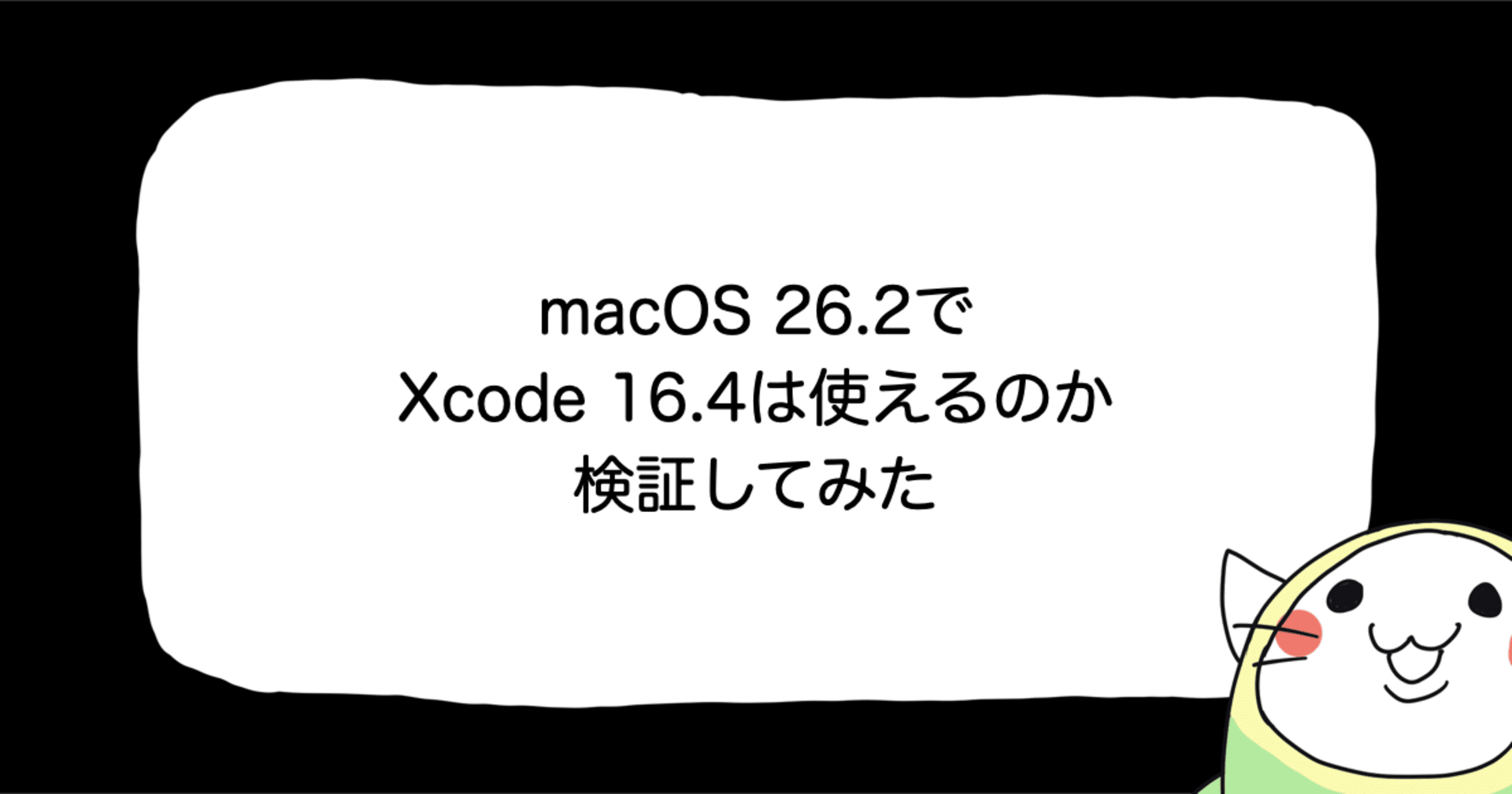![[iOS][Swift3.0] NSAttributedStringが直感的に書けるようになるSwiftyAttributes](https://devio2023-media.developers.io/wp-content/uploads/2014/11/logo_swift_400x400.png)
[iOS][Swift3.0] NSAttributedStringが直感的に書けるようになるSwiftyAttributes
この記事は公開されてから1年以上経過しています。情報が古い可能性がありますので、ご注意ください。
テキストを装飾するNSAttributedStringは文字の表現が豊かになり便利な反面、(個人の主観ですが) 記法がすこし面倒です。
今回はそんなNSAttributedStringが書きやすくなるSwiftyAttributesといういライブラリを試してみました。ライセンスはMITです。
https://github.com/eddiekaiger/SwiftyAttributes
検証環境
今回は下記環境で試しています。
| Xcode | 8.2 |
|---|---|
| Swift | 3.0.2 |
| CocoaPods | 1.0.0 |
準備
CocoaPodsで追加します。
use_frameworks!
target "ターゲット名"
pod 'SwiftyAttributes'
post_install do |installer|
installer.pods_project.targets.each do |target|
target.build_configurations.each do |configuration|
configuration.build_settings['SWIFT_VERSION'] = "3.0"
end
end
end
文字を装飾する
簡単な使い方
SwiftyAttributesではStringの拡張として各種装飾のプロパティが用意されています。
下記は文字の色を赤にする例です。(各種装飾はwith○○形式で定義されています)
"対象となる文字列".withTextColor(.red)

複数
複数のAttributeを適用したい場合はつなげて記述します。
例として、下記は文字を赤くして斜めにして青い下線を引いています。
"対象となる文字列".withTextColor(.red).withObliqueness(0.8).withUnderlineStyle(.styleSingle).withUnderlineColor(.blue)

サンプル
各種効果を適用させてみました。
let baseText = "吾輩は猫である" // フォント .withFont(UIFont) sample1Label.attributedText = baseText.withFont(UIFont.boldSystemFont(ofSize: 24.0)) // 文字色 .withTextColor(UIColor) sample2Label.attributedText = baseText.withTextColor(.orange) // 背景色 .withBackgroundColor(UIColor) sample3Label.attributedText = baseText.withBackgroundColor(.cyan) // カーニング .withKern(Double) sample4Label.attributedText = baseText.withKern(8.0) // 影 .withShadow(NSShadow) let shadow = NSShadow.init() shadow.shadowOffset = CGSize(width: 3, height: 3) shadow.shadowColor = UIColor.orange // 影の色 shadow.shadowBlurRadius = 4.0 // ぼかしの半径 sample5Label.attributedText = baseText.withShadow(shadow) // 横に拡大? .withExpansion(Double) sample6Label.attributedText = baseText.withExpansion(0.8) // ななめ化 .withObliqueness(Double) sample7Label.attributedText = baseText.withObliqueness(0.8) // 線 .withStrokeWidth(Double).withStrokeColor(UIColor) sample8Label.attributedText = baseText.withStrokeWidth(1.0).withStrokeColor(.blue) // 下線 .withUnderlineStyle(NSUnderlineStyle).withUnderlineColor(UIColor) sample9Label.attributedText = baseText.withUnderlineStyle(.styleDouble).withUnderlineColor(.magenta) // 取り消し線 .withStrikethroughStyle(NSUnderlineStyle).withStrikethroughColor(UIColor) sample10Label.attributedText = baseText.withStrikethroughStyle(.styleSingle).withStrikethroughColor(.red) // 段落スタイル .withParagraphStyle(NSMutableParagraphStyle) let paragraphStyle = NSMutableParagraphStyle() paragraphStyle.alignment = .center sample11Label.attributedText = baseText.withParagraphStyle(paragraphStyle) // 文字の方向 .withWritingDirections([WritingDirection]) sample12Label.attributedText = baseText.withWritingDirections([.rightToLeftOverride]) // リンク .withLink(URL) sample13TextView.attributedText = baseText.withLink(URL(string: "https://classmethod.jp/")!)
まとめて適用するケース
装飾をまとめて適用する場合は.withAttributes([Attribute])形式で記載する方が便利かもしれません。 SwiftyAttributesではAttributeというenumが定義されており、そのリストを定義することが出来ます。
たとえば、
"対象となる文字列".withTextColor(.red).withObliqueness(0.8).withUnderlineStyle(.styleSingle).withUnderlineColor(.blue)
は
"対象となる文字列".withAttributes([.textColor(.red), .obliqueness(0.8), .underlineStyle(.styleSingle), .underlineColor(.blue)])
のように記述することが出来ます。
サンプル
複数の文字に同じ装飾を適用しています。
let attributes: [Attribute] = [.textColor(.white), .backgroundColor(.darkGray), .underlineStyle(.styleDouble), .underlineColor(.magenta)] sample1Label.attributedText = "Hello World".withAttributes(attributes) sample2Label.attributedText = "Bonjour le monde".withAttributes(attributes) sample3Label.attributedText = "Ciao mondo".withAttributes(attributes)

AttributedStringをつなげる
SwiftyAttributesではNSAttributedString + NSAttributedStringのオペレーターが定義されています。
そのため、 + で装飾文字列をつなげることができます。
サンプル
let attachment = NSTextAttachment() attachment.image = UIImage(named: "cat") attachment.bounds = CGRect(x: 0, y: -2, width: 16, height: 16) sampleLabel.attributedText = "吾輩は".withTextColor(UIColor.brown) + NSAttributedString(attachment: attachment) + "である".withTextColor(UIColor.brown)

さいごに
今回、検証してみてSwiftyAttributesを使ったwithLigaturesとwithAttachmentの適用が自分の環境では上手くいきませんでした。(ligaturesの方はフォントが合字に対応していなかったのかもしれません・・・)
attachmentの方は「AttributedStringをつなげる」のサンプルに記載したように+でつなげるのであれば問題ありませんでした。念のため、ご留意ください。









